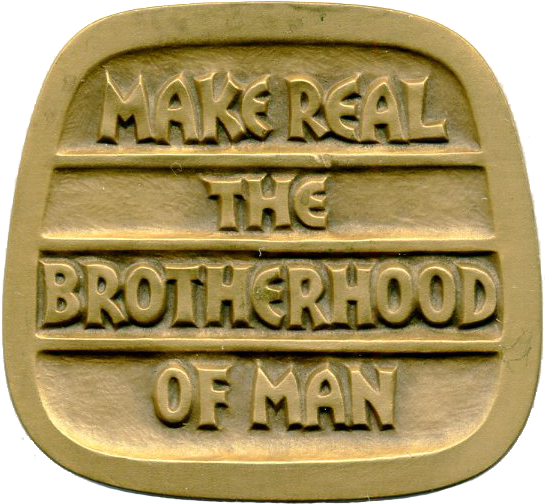 |  |
Louis D. Brandeis medal designed by Gerta Ries Wiener, struck by Medallic Art Company in quantities
of 430 bronze, 220 pure silver, and about 8 gold-plated pure silver. Obverse: Portrait; JUSTICE LOUIS
BRANDEIS 1856-1941, Gerta Wiener. Reverse: MAKE REAL THE BROTHERHOOD OF MAN.
45 x 43 mm.
In 1916, Louis Brandeis’ nomination to the Supreme Court, by President Woodrow Wilson, aroused much consternation in some circles; even the staid Wall Street Journal called him a “rabid … super-extreme … anti-corporation agitator.” Anti-Semitism also raised its ugly head with the first Jewish nominee to the High Court. However, Brandeis had the support of the people, as his nickname (“The People’s Lawyer”) revealed, for his crusades on behalf of consumer protection and women’s rights, and against monopolistic practices.
While Brandeis won fame as a dissenter on the bench, he was actually in the majority far more often than the minority. His dissenting opinions were of quality not quantity. However, these were highly significant because, in stating his belief in the “living law,” in many instances Brandeis stated the law as it was yet to be. In a speech made to a Boston audience in 1914, Justice Brandeis stated: “America’s fundamental law seeks to make real the brotherhood of man. America’s insistent demand in the twentieth century is for social justice.”
When World War I broke out, Brandeis agreed to serve as Chairman of the Provisional Committee for General Zionist Affairs. “My approach to Zionism,” he said, “was through Americanism. Gradually it became clear to me that to be good Americans we must be better Jews, and to be better Jews we must become Zionists.”
Brandeis’ close relations with President Wilson and high administrative officials played an important part in securing support for the Balfour Declaration, whereby Great Britain “views with favour the establishment in Palestine of a national home for the Jewish people.”